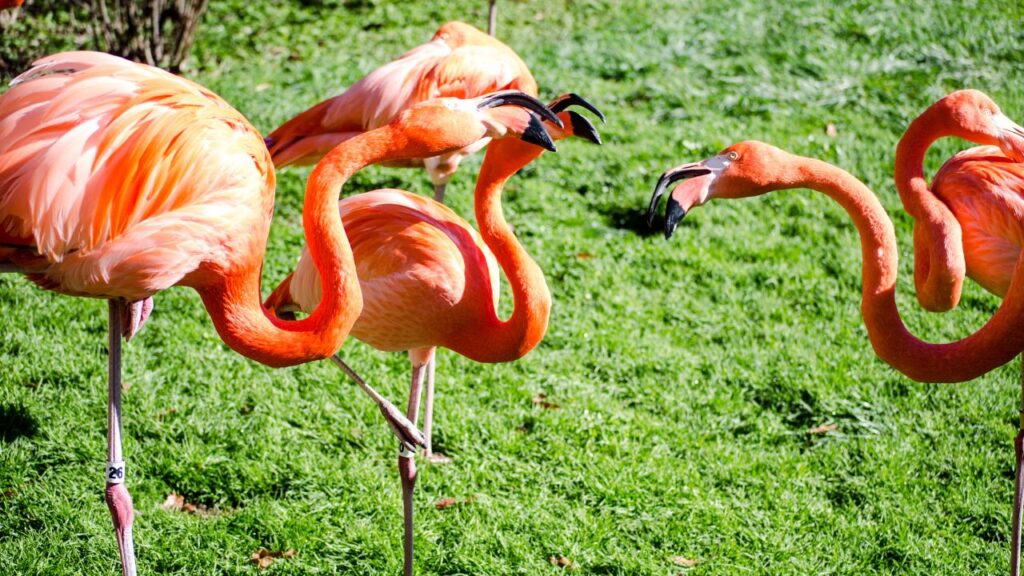
Birds are truly lovely until the point when they start fighting with each other. As curious as you may be to know ‘Why,’ there can be multiple reasons for birds to show aggression towards each other.
One little birdie is delightful to have in the house, but when you multiply them, the chaos begins. While there’s no such thing as a ‘Mean Bird,’ however, many birds together sometimes can be problematic. But how to stop birds from fighting with each other? Join us in this article as we find answers to the same. However, before moving towards ‘How, let’s find out what leads to fighting behavior in birds?
10 Reasons “Why Birds Fight With Each Other”?
Birds engage in fighting or aggressive behavior for various reasons, which can be attributed to natural instincts, territoriality, mating competition, and resource defense.
Here are 10 such reasons that lead to fighting behaviors in birds, with each other:
- Birds tend to fight with each other for territorial defense. Some birds are territorial and thus fiercely protect their nesting sites and feeding areas. When another bird enters their territory, they display aggressive behavior and drive the intruder away.
- Male birds compete for female attention during the breeding season, and for this competition, they may involve some aggression. It is more like physical confrontations and aerial chases that appear like a fight between two or more birds.
- During the scarcity of food, water, and nesting materials, birds, especially in areas with higher density, fight for resource competition. The struggle to secure their necessities may lead to aggressive interaction and fights sometimes.
- Some birds want to establish Dominance hierarchy in their group, and that’s where aggressive interactions take place. Establishing Social Hierarchy is crucial for maintaining order within a group.
- Sometimes birds with parental instincts become aggressive and defensive to protect their offspring from potential threats. It happens commonly when a predator or another bird approaches their nest or chicks.
- Some birds display mobbing behavior to drive away the predators from their territory. During mobbing behavior, a group of birds harasses a potential predator, such as a hawk or owl.
- Some species of birds tend to fight or show aggressive confrontations for the competition of specific preferences for breeding sites, such as particular trees or nesting structures.
- Miscommunication or misinterpretation as well can lead to a fight between birds. Sometimes when a bird interprets another’s innocent approach as a threat, both end up fighting.
- Hormonal Changes during the breeding season can increase aggression in birds, making them more susceptible to picking up a fight.
- Species-specific behavior, especially in birds who have innate aggressive tendencies as part of their survival and reproduction strategies, tend to fight more often. These aggressive birds exhibit vocal displays, posturing, or physical combat very commonly.
Understanding the underlying reasons behind birds’ aggressive behavior and fighting nature can help implement effective strategies to reduce conflicts.

How To Stop Birds From Fighting Each Other? 9 Ways
Stopping birds from fighting with each other isn’t as easy as handling two pet dogs in the same situation. Instead, it requires a combination of understanding birds’ behavior, the reason behind the same, and thus implementing proactive measures.
Here are some methods following which you can stop birds from fighting with each other:
- Ensure sufficient resources: Reduce bird-on-bird conflicts by providing ample essential items. Install multiple feeding stations, one for each bird, to prevent competition over food. This ensures equal access to resources and minimizes territorial disputes.
- Separate birds (Cages) if necessary: If conflicts persist despite adequate space and resources, consider individual cages for the birds involved. Make sure each cage offers ample room and enrichment to minimize further aggression and promote a peaceful environment.
- Promote equal attention and positive associations: Avoid jealousy-driven conflicts among budgies and offer them individual quality time with you and foster shared experiences together. Reinforce positive behavior by offering favorite treats during their time together, promoting harmony and reducing tension.
- Create a neutral play area: Prevent territorial conflicts among budgies by allowing them to play together only in neutral spaces. Avoid playing on each bird’s cage or claimed areas. Invest in a new play stand if needed to minimize or eliminate skirmishes. Also, supervise their interactions and respond promptly to any potential fights.
- Avoid forcing contact with nervous birds: If your bird reacts defensively, refrain from sudden movements. Instead, approach calmly and gradually and let the birds decide whenever they feel comfortable interacting with each other. Consider offering treats and patience to build trust and encourage positive associations.
- Implement stick training: When handling a bird that is fearful or traumatized, stick training is a gentle and less invasive method. Teach the bird to step up on a stick or perch, allowing it to move comfortably without feeling forced. This approach fosters trust and reduces stress during the training process.
- Install bird baths: Bird baths offer more than just drinking water; they also encourage birds to bathe, reducing stress and aggression. Providing this inviting space for your feathered friends can promote a sense of calm and improve overall bird interactions in your garden or backyard.
- Break up fights safely: When budgies clash, act swiftly and calmly. Keep handy tools like a half-filled can of coins or pebbles to make a sudden noise that startles them apart. Use a stick to gently separate them or wave a towel to deter them. After stopping the fight, give both budgies a calm time-out in separate cages.
- Lastly, if none of the other measures help, and your bird’s aggression persists despite your efforts, it’s time to visit a Vet. To rule out any health issue, consult with an avian veterinarian. Or, for more assistance, consult a certified bird behavior consultant for expert guidance.
Which Birds Tend To Fight The Most? 8 Birds You must Know
Birds that are territorial, have strong mating competition, or are social in nature are more prone to engaging in fights.
Here are some examples of the same:
- Cardinals (Cardinalis spp.), especially males of this species, are aggressive during the breeding season.
- Male Hummingbirds (Trochilidae family are highly territorial and thus often engage in aerial battles.
- Known for their assertive behavior, Blue Jays (Cyanocitta cristata) are defensive for their nests.
- Extremely intelligent, interactive, and social crows can get into during territorial disputes.
- Male Mockingbirds get aggressive, especially when defending their territory. Not only that, but they may even engage in vocal and physical confrontations with intruders.
- Seagulls (Larus spp) are competitive scavengers, and when they compete for food and nesting, they can become aggressive.
- Male House Sparrows (Passer domesticus) display aggressive behavior during the breeding season specifically.
- Male Red-winged Blackbirds (Agelaius phoeniceus) display dominance since they are highly territorial.
Which Bird Species Doesn’t Get Aggressive?

Although birds tend to display aggression under certain circumstances, some bird species are known for being less aggressive.
Here are some bird species that are considered more docile and less likely to exhibit aggressive behavior:
- Canaries (Serinus canaria is gentle and non-aggressive in nature and thus ideal for beginner bird owners.
- Finches (Fringillidae family) are very peaceful and sociable. They, in fact, get along really well with each other in aviaries.
- Doves and Pigeons (Columbidae family) are usually calm and peaceful birds who live harmoniously in groups.
- Budgerigars (Melopsittacus undulatus), or as we lovingly know them as Budgies, are social and usually less aggressive.
- Toucans (Ramphastidae family) are very gentle and not aggressive.
- Canaries (Serinus canaria) are typically docile and not aggressive, and keeping them brings peace and calmness to the environment.
- Poicephalus Parrots (Poicephalus genus) have even temperaments and are often less aggressive.
Do Birds Fight To The Death?
Some birds do fight aggressively, but it is relatively rare that these fights turn fatal. However, during bird fights, some injuries may occur, and sometimes even it may result in severe harm, but deaths are very less likely.
Bottom Line…
In conclusion, promoting peaceful coexistence among birds involves providing sufficient resources, neutral play areas, professional help if needed, and gentle training techniques. These strategies foster harmonious interactions, enriching both the birds’ lives and our own.

Hi, There and Welcome to BirdsNews.com, is here to help you learn and care about pet birds. and this blog is a journal of everything I’ve learned.
